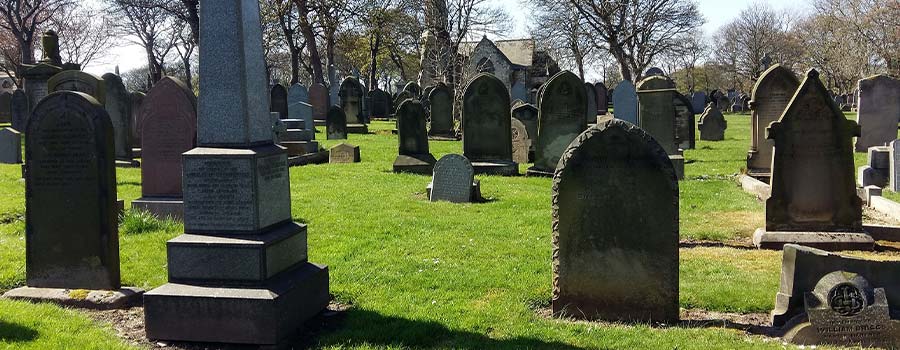
Cemeteries are usually park-like settings reserved for the burial of the dead or their cremains. Markers usually contain the name and date of birth and death of the person buried and the sites are sometimes visited by friends and family members. Some will take comfort in the knowledge the term cemetery comes from a Greek word meaning “sleeping place”.
Cemeteries, however, are a relatively new way of disposing of bodies. Prior to burial, the dead of ancient times were often left in caves, on mountaintops, disposed of in lakes or oceans, burned and even left in trees.
The Greeks first built cemeteries outside of their ancient cities and are credited with creating the term “cemetery”. In Europe, churchyards were frequently used to bury the dead, a tradition that found its way to America. It wasn’t until the 18th Century that planned public park-like areas began to become popular as cemeteries in the United States. These early cemeteries were large gardens with impressive statues and grave markers, generally reserved for the wealthy. It wasn’t until after industrialization that cemeteries became more popular for the middle to lower class. These initial cemeteries were not only used for funerals and burials, but were also used to visit on birthdays, anniversaries, and holidays. Families would plan all-day outings at these early cemeteries.
As cemeteries became more available for the masses, instead of large monuments, families purchased simpler marble or stone markers, and eventually ground level markers to make maintenance easier.
Today, many cemeteries in the world’s largest cities have become full and available space too valuable to be used for burying the dead. Along with taking up space, traditional burials used other resources like wood, metal, stone, and concrete. They can lead to groundwater contamination. As people become more aware of these issues many are turning away from traditional cemetery burials, turning instead to cremation.
Cremated remains use fewer resources to bury and many families keep the cremains in decorative urns. The cremains are also often spread in the oceans, in forests, used to help grow trees and even shot into space or used in fireworks and tattoo ink.
At Fares J. Funeral Homes and Crematory, we have been a part of the evolving funeral and cremation process for generations. We understand change is inevitable and embrace it. If you want to know about the modern options available to you, or prefer established, traditional services, contact us. We would appreciate the opportunity to serve you.


Post a comment